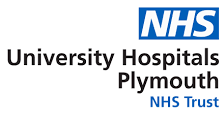
Eligibility
Local study conflicts
- None
Inclusion Criteria:
- ≥ 18 years old patient with pneumothorax
- The pneumothorax is of sufficient size and symptoms for the treating physician to consider intervention with ICD, AND:-
- The patient has a spontaneous secondary pneumothorax; i.e. a pneumothorax occurring in a patient with one of:
- Known underlying lung disease OR
- ≥ 50 years of age with significant smoking history OR
- With suspected underlying lung disease with radiology confirming structural lung disease.
Exclusion Criteria:
- Bilateral pneumothorax
- Traumatic or iatrogenic pneumothorax
- Clinical concerns of tension pneumothorax
- Age < 18 years of age
- Known pregnancy
If the patient is eligible:
- Gain verbal agreement in principle before proceeding. Explain:
- Taking part in research is likely to improve the quality of their care
- Risks are carefully controlled - research is safe
- Explain the uncertainty that exists with respect to treatment of their condition
- If they change their mind they can withdraw their participation at any point
Step by Step Guide to Recruitment:
In standard working hours;
- Any patient found to have pneumothorax bleep ED research Nurses on 81971 or call 39455
Out of hours and weekends:
Gather documentation
- The working file is kept in the research cupboard in majors (outside cubicle 10).

Consenting the patient formally
- Patients with capacity - use Participant Information Sheet and the Consent Form
- Patients without capacity - use either a Personal (relative) or Professional Consultee (clinician not on the delegation log) – Use the Nominated Consultee Information Sheet and sign the Nominated Consultee Consent Form
Randomisation procedure
- Go to this site: PRINCE-SSP Randomisation site
- Doctors and nurses on the delegation log will have login access
- record the allocation in the patients notes
Carrying out the intervention:
- Inform the clinical team of the randomisation treatment the patient has been allocated to (– i.e. aspiration or ICD using standard equipment per hospital policy)
- Clinician discretion regarding discharge or admission
Disposition and follow-up:
If admitted:
- Ward based care as per hospital protocol
If discharged:
- A participant diary will be provided for participants to take home if they are discharged before day 5. A member of the research team will then contact the participant via telephone to remind the participant to collect the data and bring the diary back at Day 30.
- planned follow-up: daily for first 5 days post-randomisation, At day five post-randomisation, 30 days post-randomisation
Provide standard safety net advice, written and verbally, for patients discharged with a pneumothorax:
- Smokers should be advised to quit and seek assistance from their GP to successfully achieve this (Men who smoke more than 20 cigarettes a day have 100 times the risk of developing a pneumothorax compared to men that don’t smoke.)
- avoid flying for at least a week after a chest radiograph has confirmed complete resolution of their spontaneous pneumothorax, or until they have recovered from a definitive cardiothoracic surgical procedure aimed to prevent pneumothorax recurrence
- underwater diving should be permanently avoided after a pneumothorax, unless the patient has had bilateral open surgical pleurectomy
- They should return for re-assessment should they become breathless
- From RCEM Learning module spontaneous pneumothorax (opens in new window)